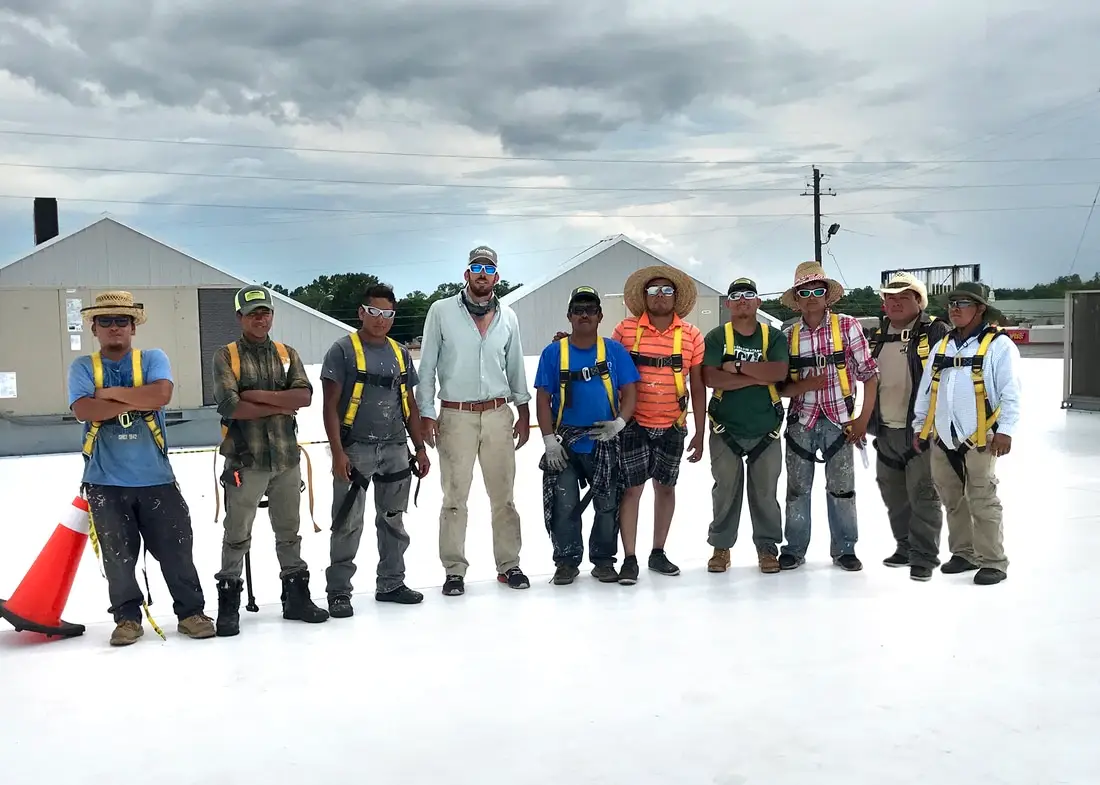Every building is different and has unique requirements when it comes to choosing the right roof system. Commercial roofs, because of their larger surface areas, roof obstructions (HVAC equipment, pipes and ventilation), and drainage concerns, require careful attention when determining the proper roof system. We chose to do a TPO Recover on this commercial roof in Montgomery, AL. Here is how we did it.
Quality Job Done Quickly
One of the biggest concerns with commercial roofing projects, is getting the job done in a timely, safe manner while not jeopardizing the business activity of the tenants below.
This particular commercial roof had (3) fully operational stores below. Each store had customers coming in and out of the building on a daily basis. Also, each store was experiencing roof leaks with every rain. Summer times in Alabama are unforgiving to comprised roof systems.
With a chance of rain every afternoon for the next (4) months (typical for Alabama summers), we had to install a new roof system quickly, yet efficiently to not comprise quality control. This roof had a layer of modified bitumen on top of a plywood deck substrate. With 90% of the roof deck in solid, dry condition, we determine that leaving the existing (1) layer of roofing on was the best option for this particular roof. This is what’s called a “recover” option and does not effect manufacturer warranties as long their is only (1) existing layer.
After an inspection of the underside of the roof through the attic, we noticed several areas along the perimeter of the roof that appeared to be rotted. The roof had poor drainage in this area, causing chronic issues and plywood to rot over the years. We surgically removed this comprised section of the roof, and change (32) 4’x8′ sheets of CDX plywood. During this phase of the project we also eliminated (11) obsolete pipe penetrations. Older commercial roofs almost always have roof penetrations that have been canceled from the inside or are no longer operational. It’s always best to eliminate this obstructions, that tend to be leak prone, during a roof replacement project. We added structural support and decked over this places. Once all rotted plywood was replaced and obsolete pipe penetrations filled, we started installing the new material.
TPO Recover
We mechanically attached a 1/2″ layer of cover board over the entire roof. The cover board provides a smooth, even substrate for the single-ply membrane, or TPO. Next we installed GAF’s .60 mil EverGuard TPO. We used a bright white TPO for energy efficiency. To reduce the number of seams in the roof, we used 10’x100′ rolls of TPO. All the seams were heat welded by a hand held welder or a welding robot. For quality control, we probe the seams several times to check for any voids or cold welds. Finally, we installed custom eave drip flashing around the entire perimeter. We worked over time and through the weekend to complete this roof in (4) days.
No business was lost during the 4 day project, and the owners of the building received a quality roof.

